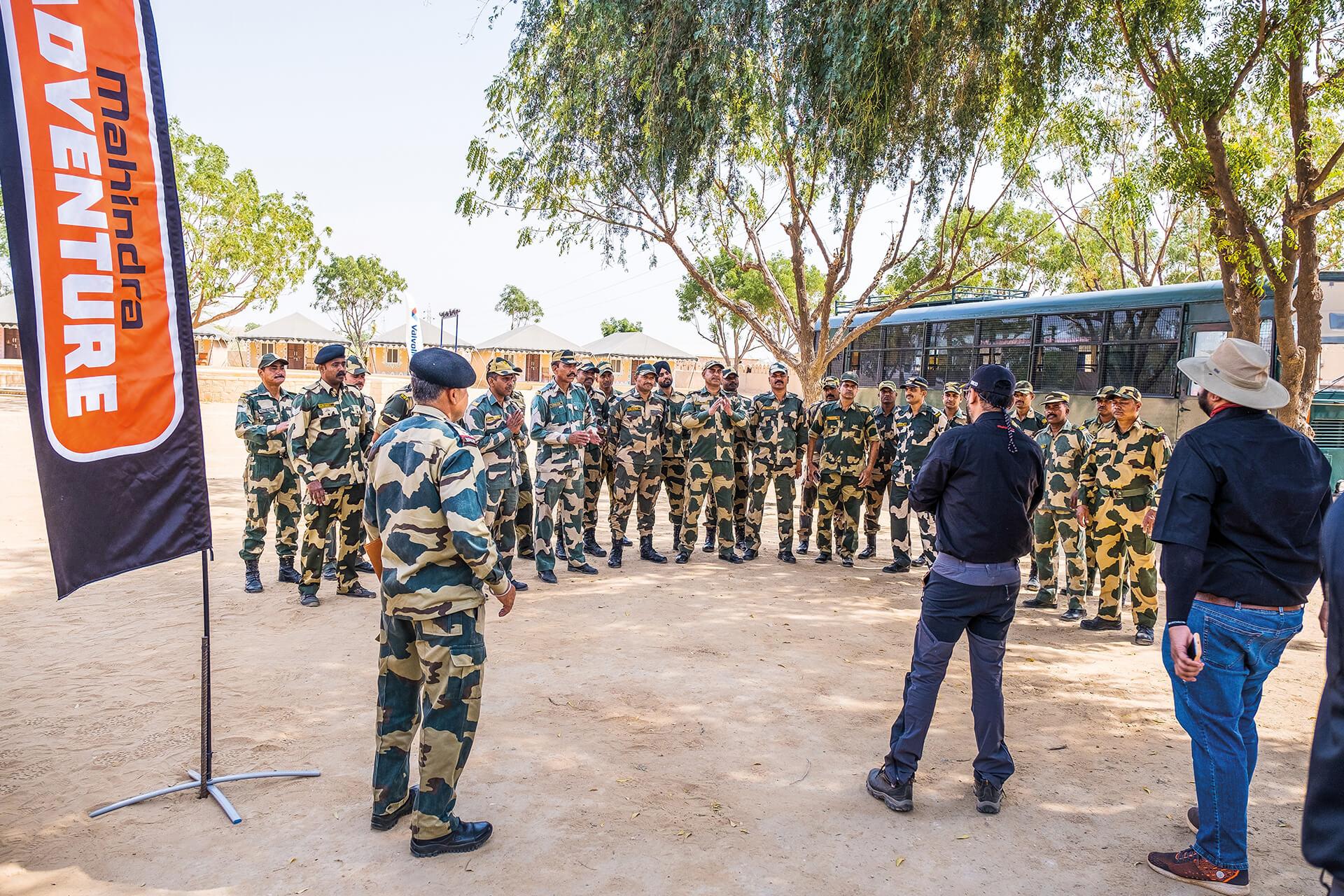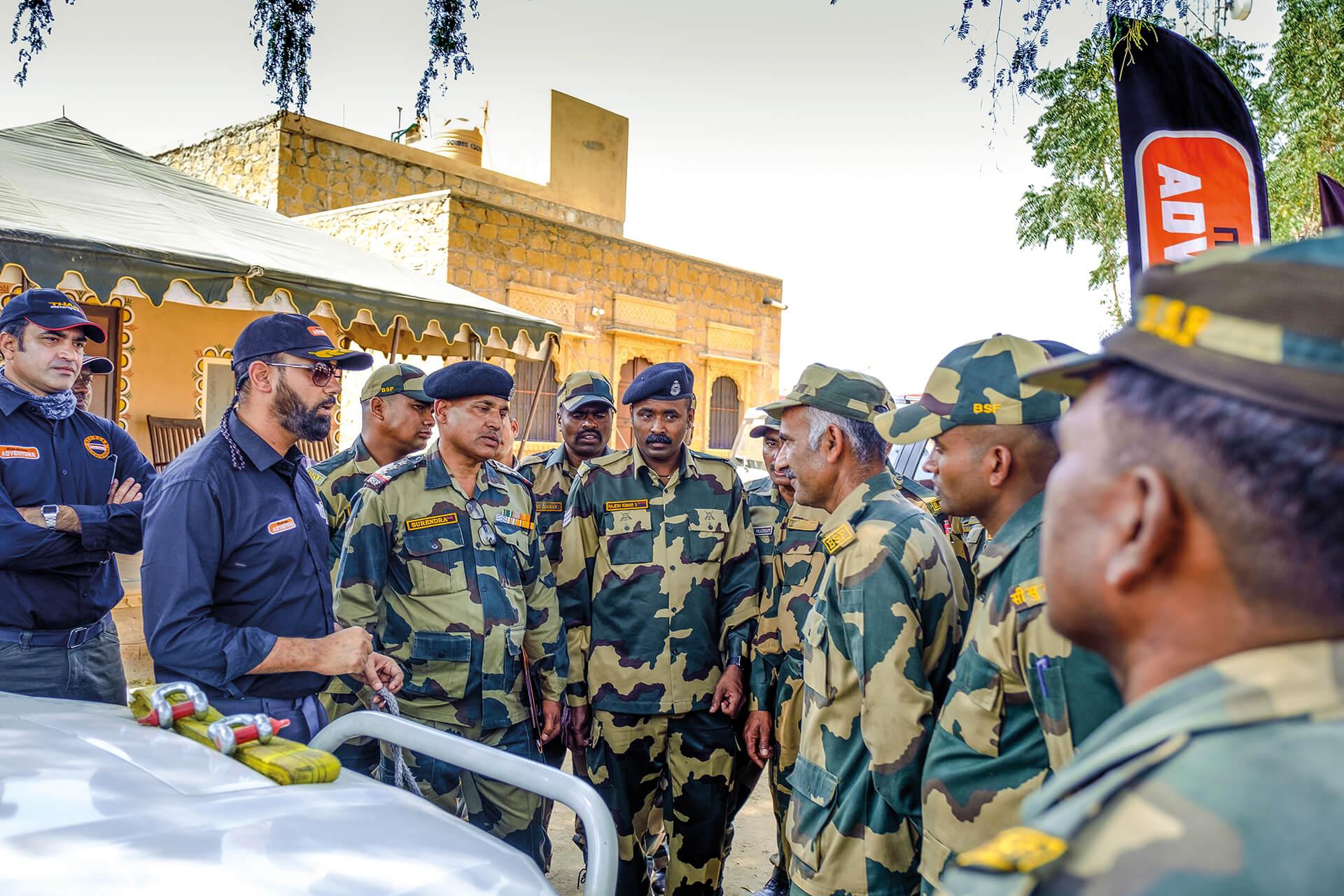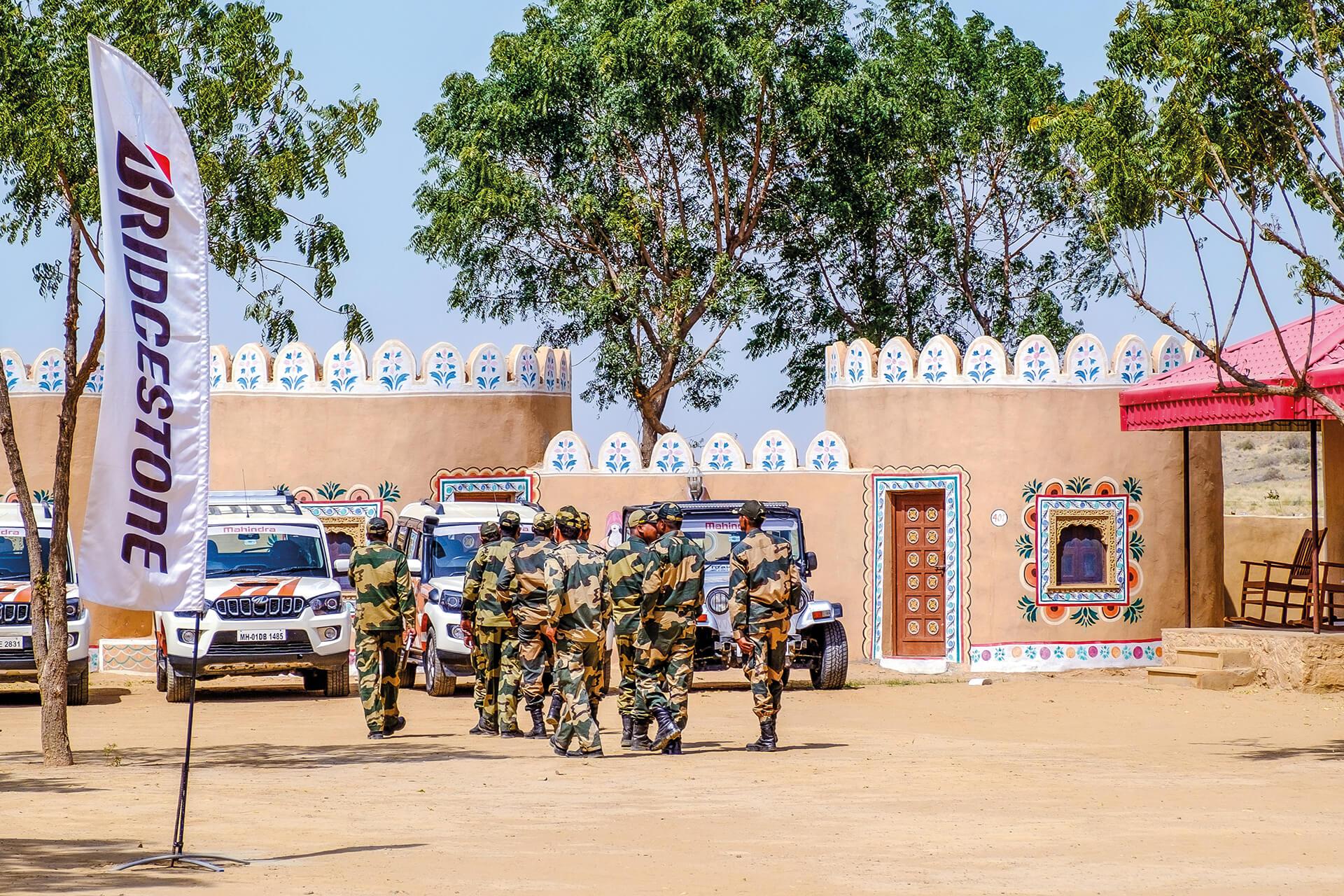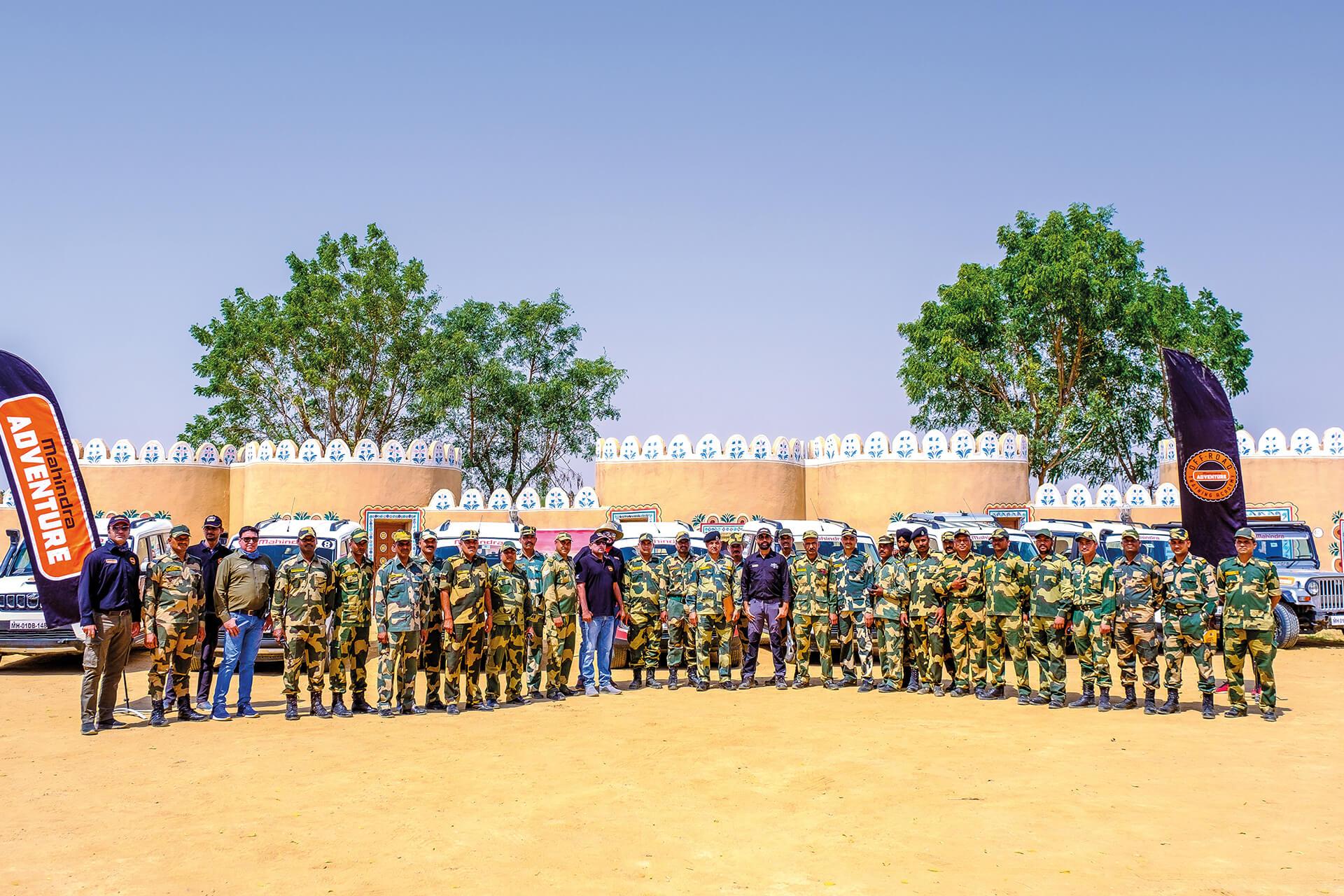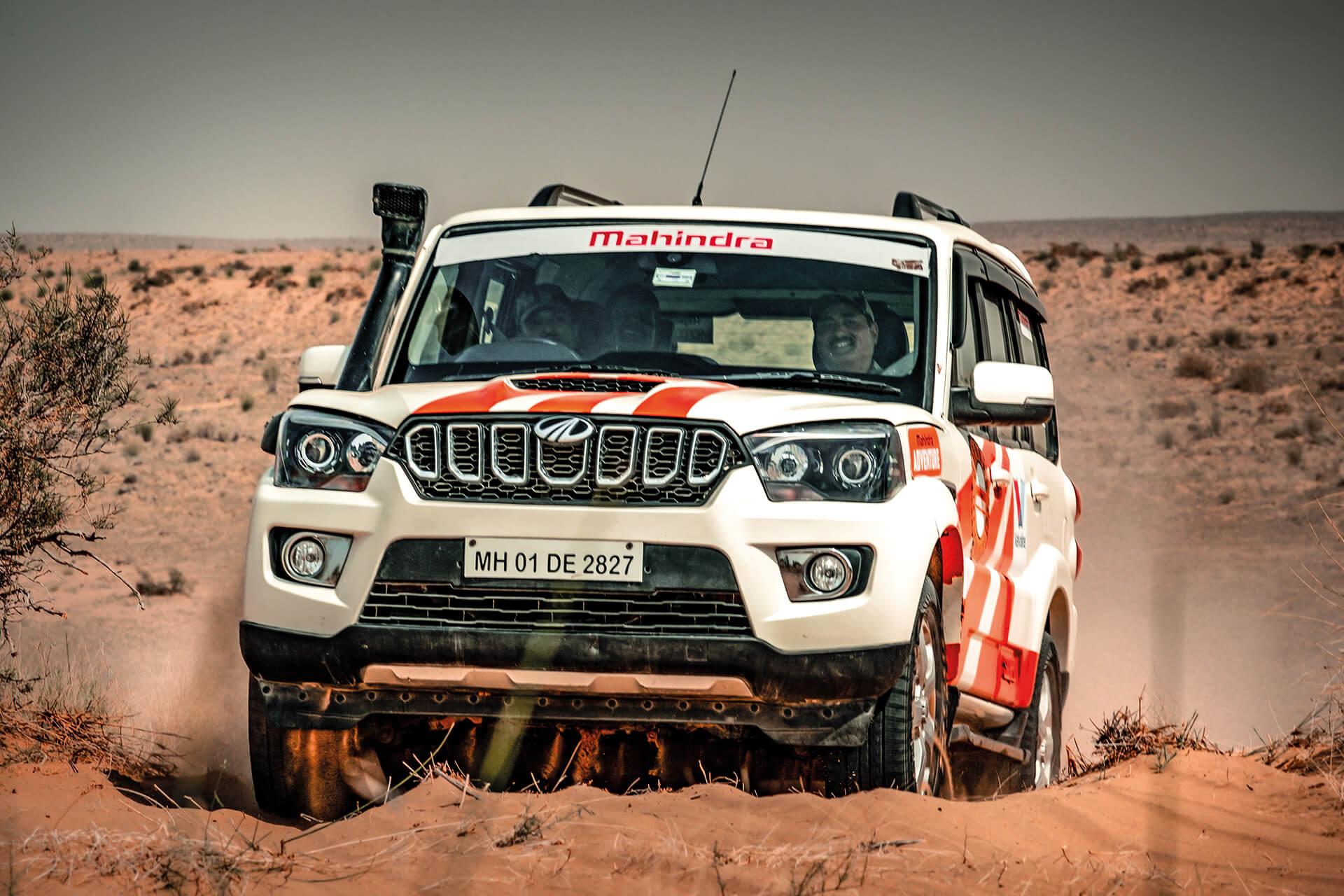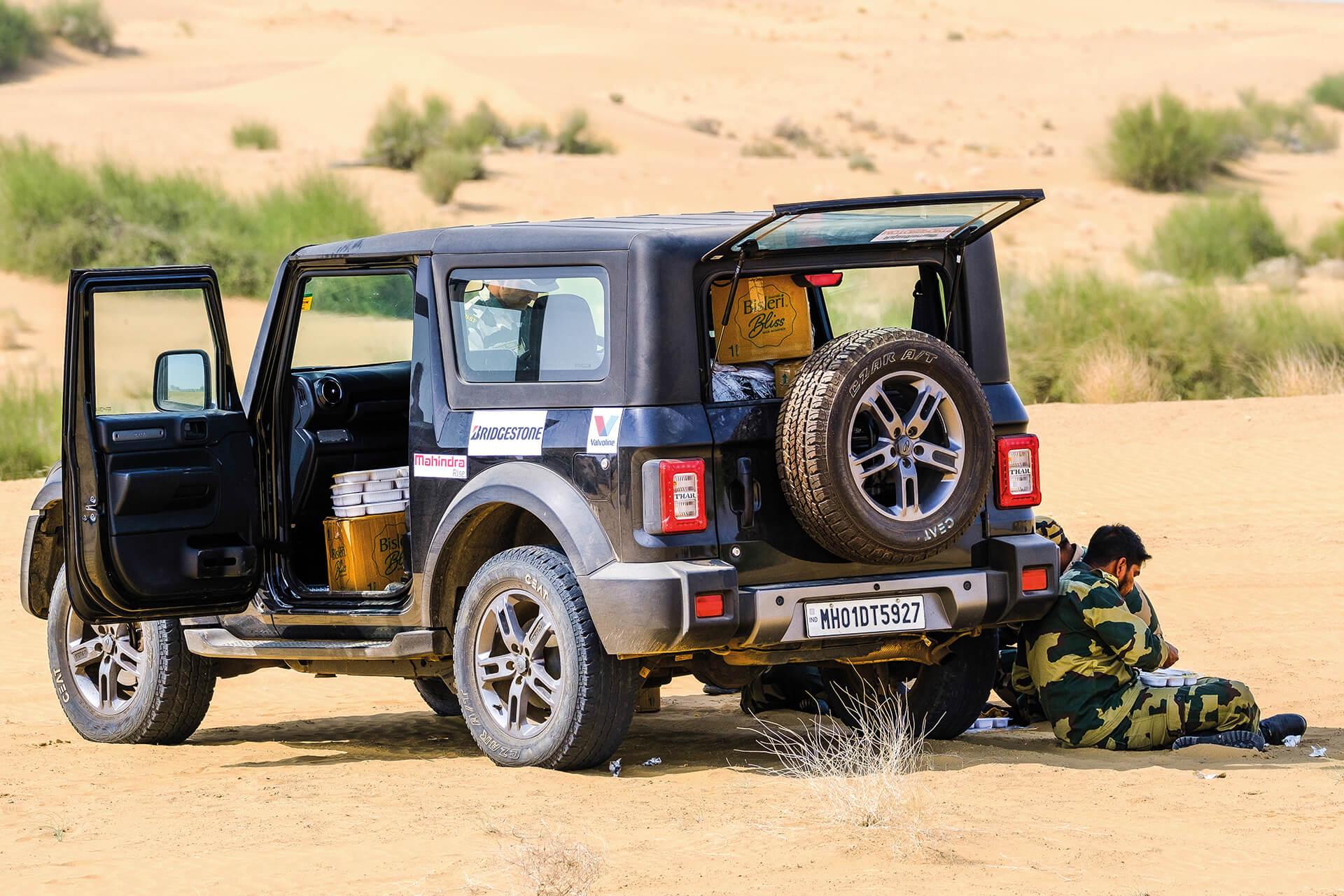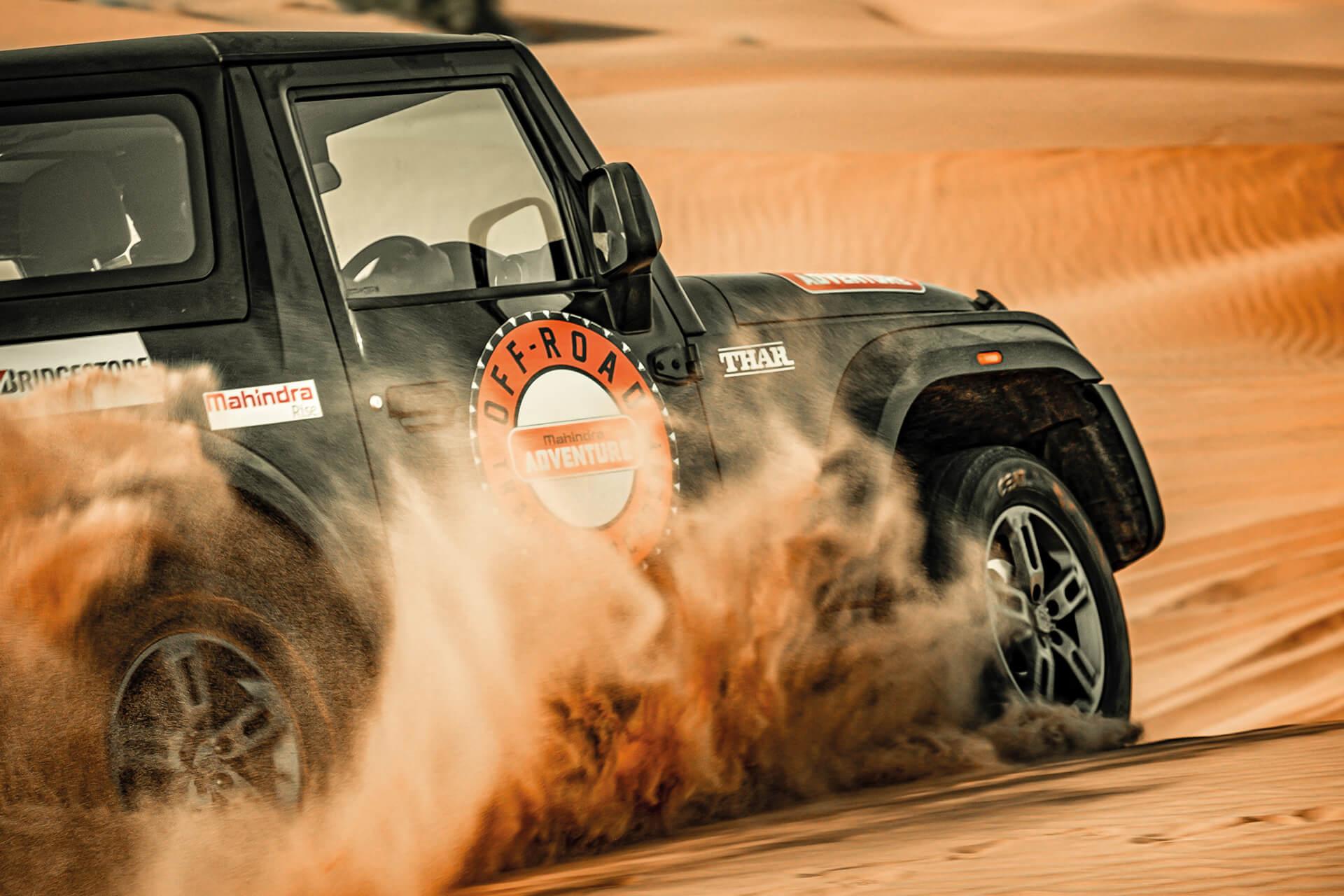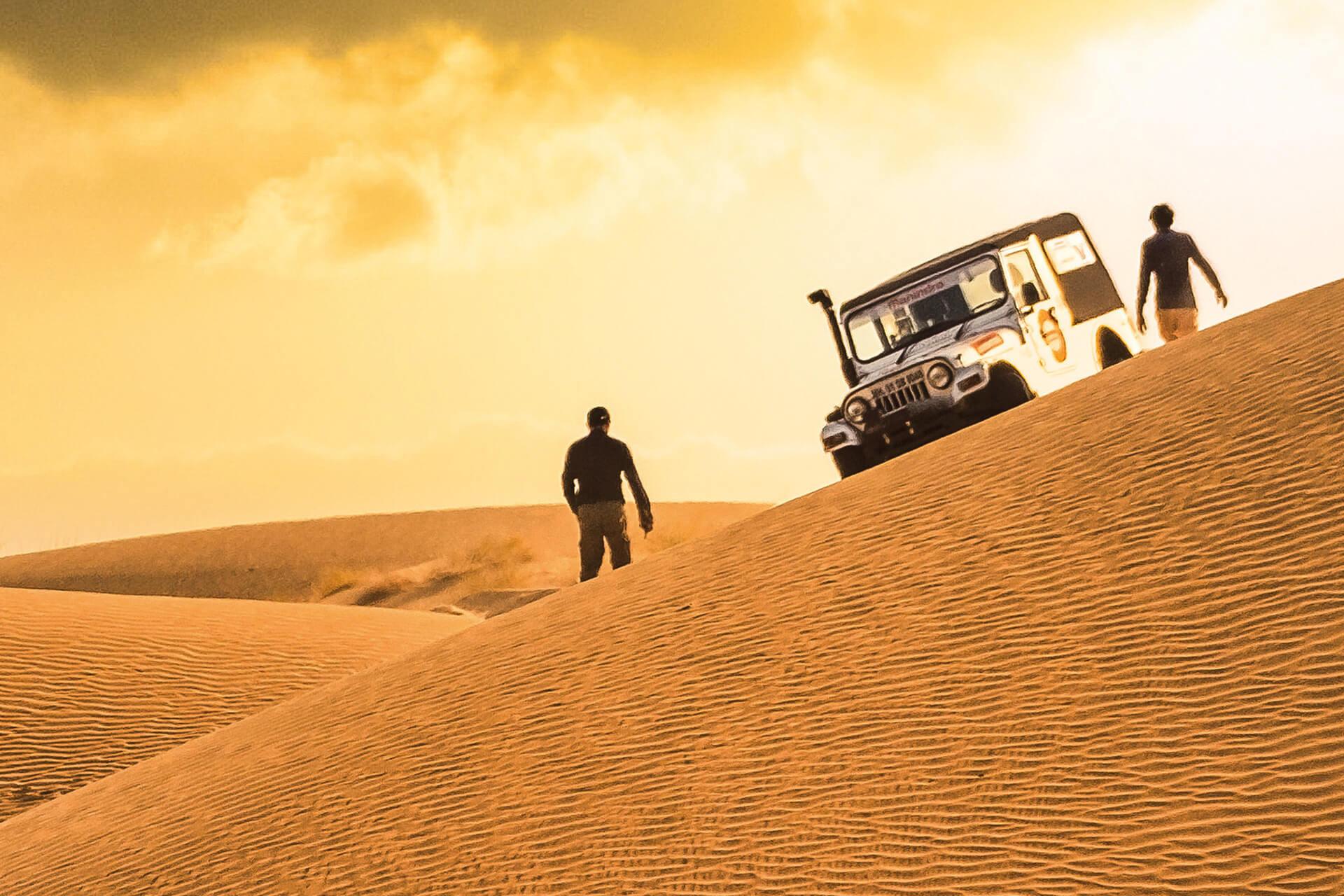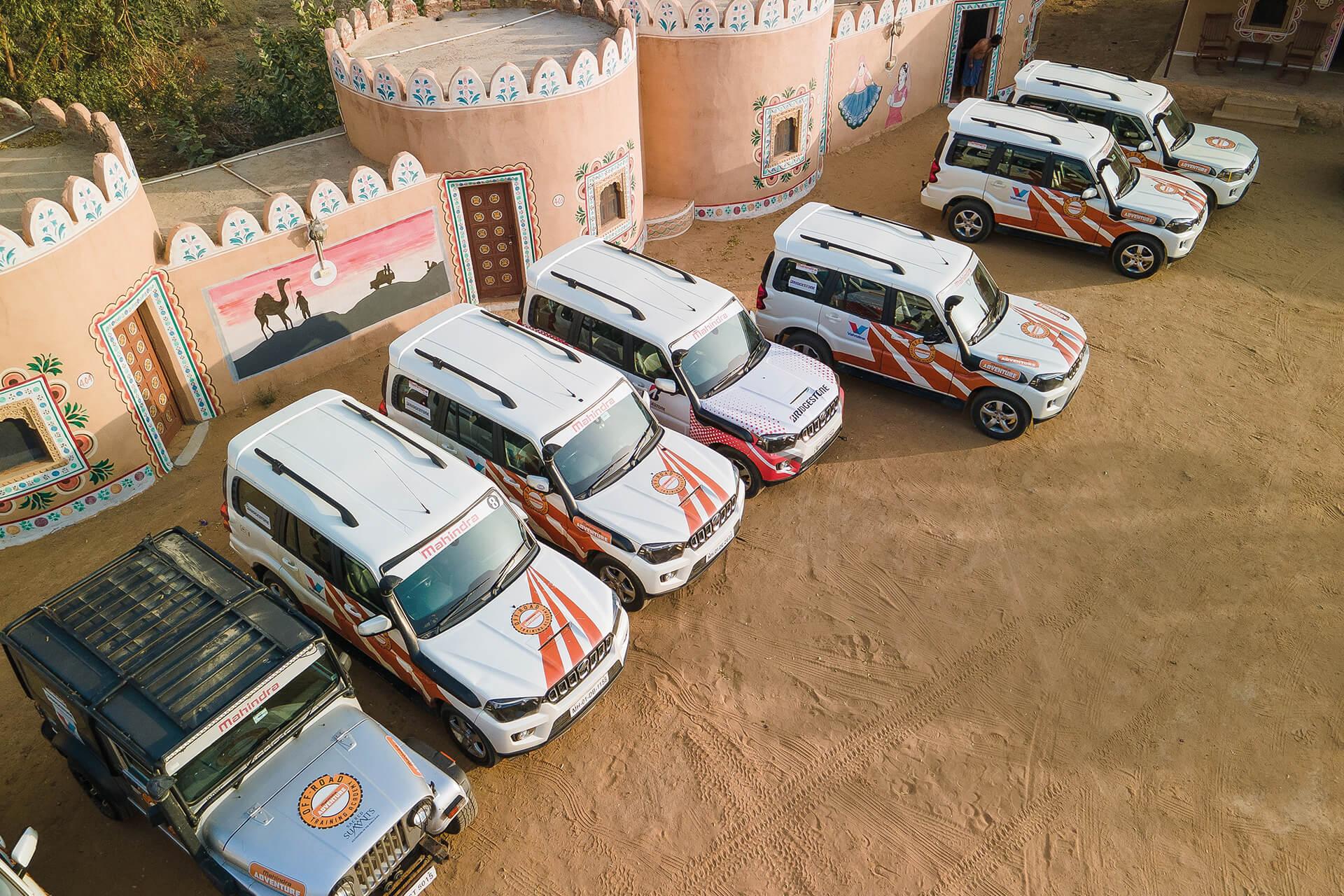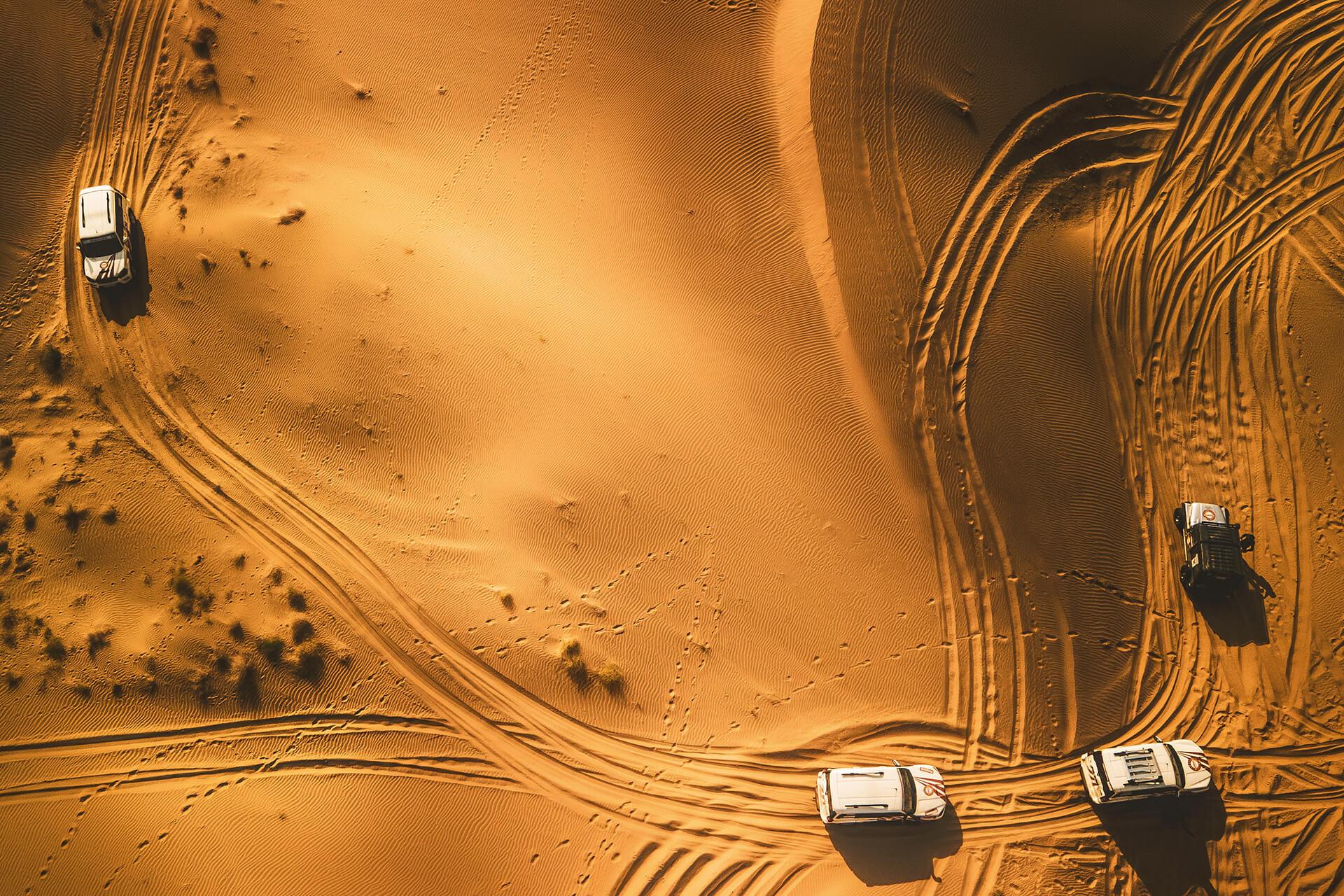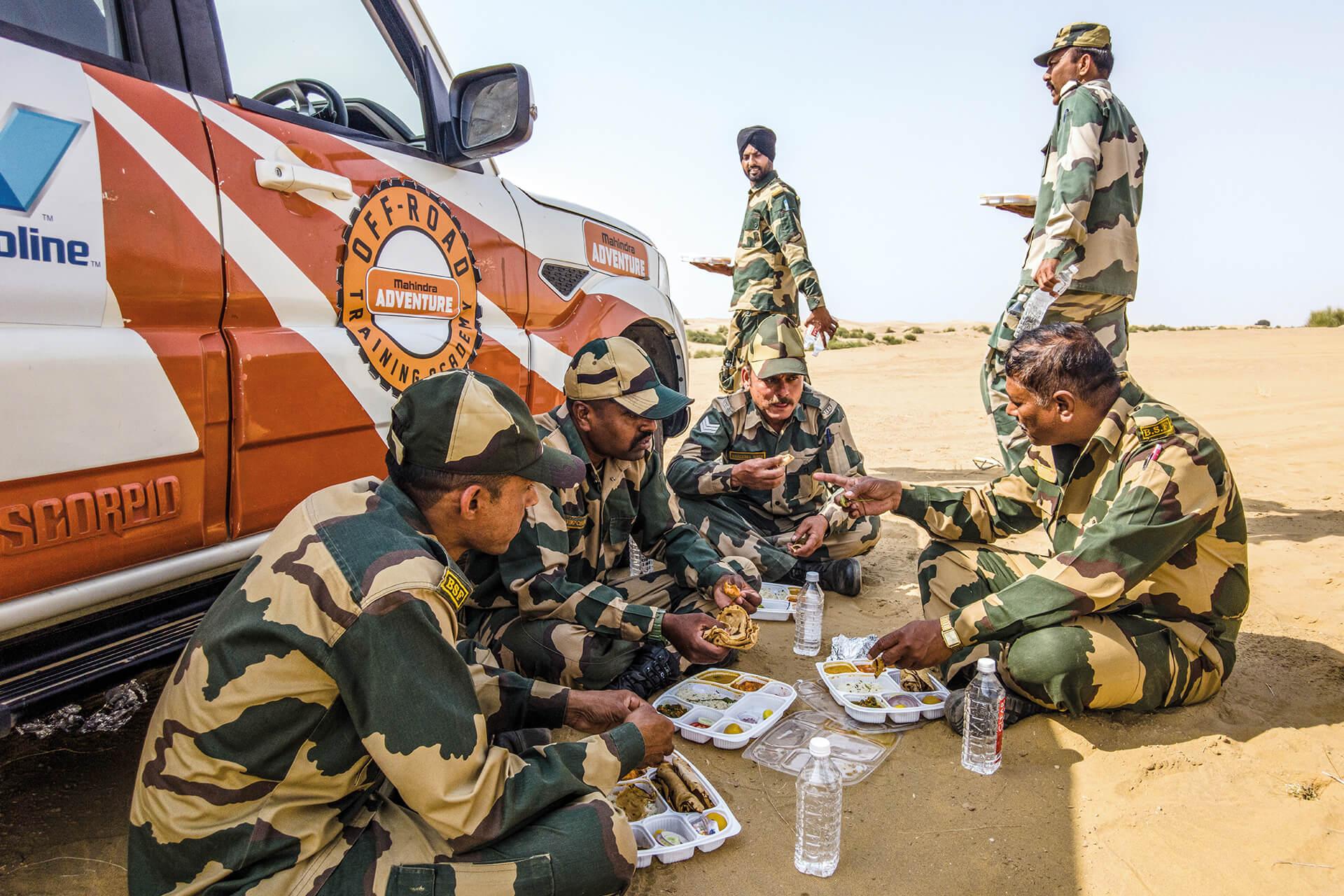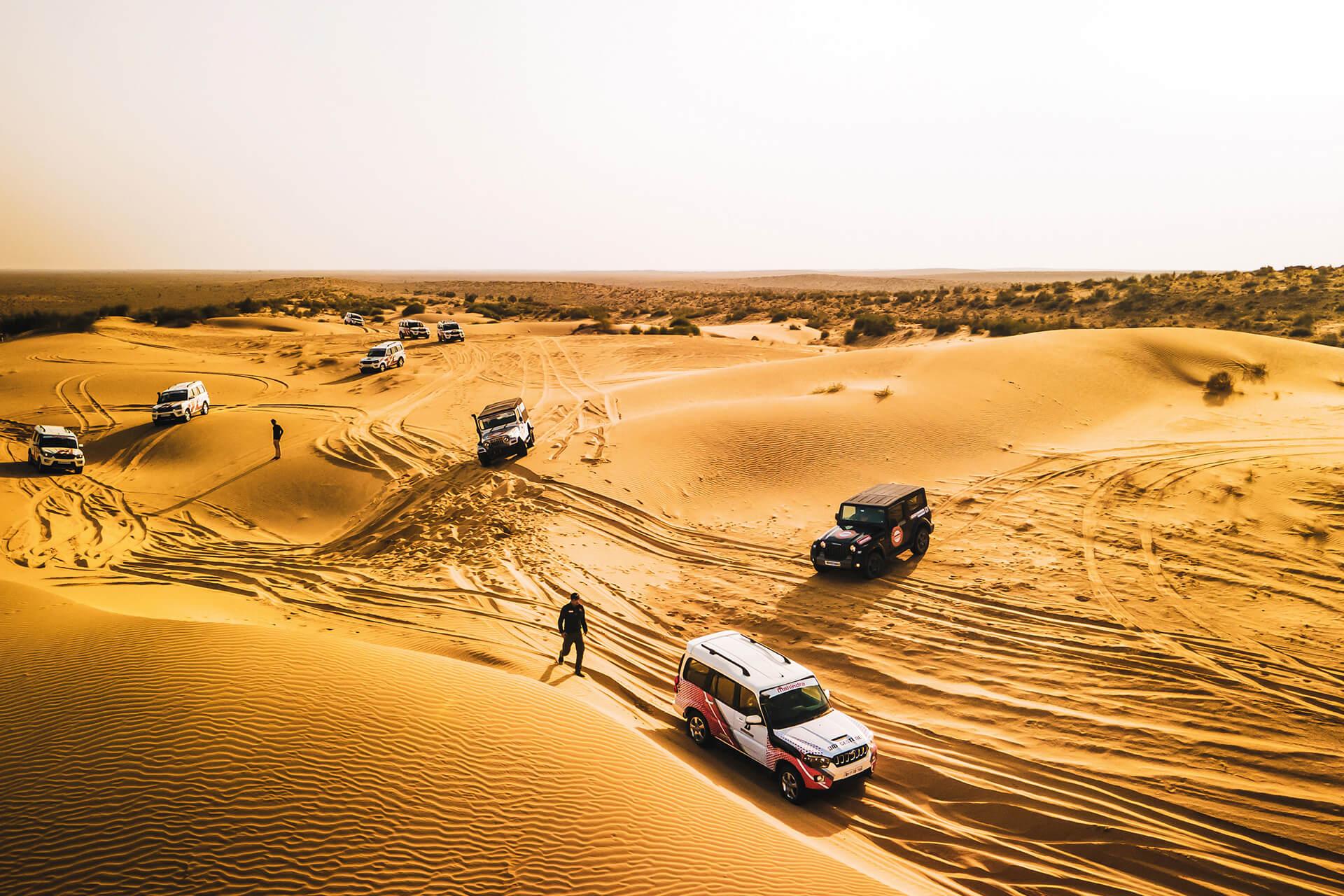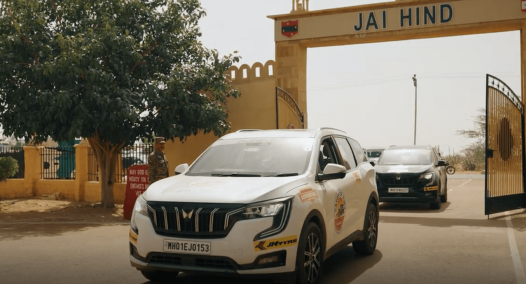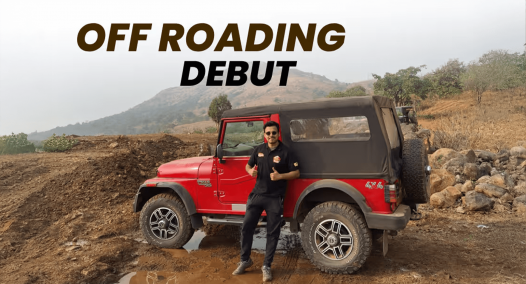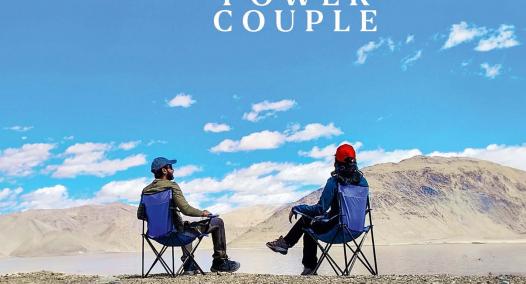Before we dive into the lessons and the progress of our men, we must first tell you a little about the venue itself. Now it is a well-established fact that the men of the Indian Armed Forces ― paramilitary forces such as the BSF included ― are trained in the harshest of terrain and in the most extreme of conditions. This ensures that most of the situations they go through in real life have already been part of the training that they have undergone. Naturally, any workshop with these men in uniform had to preserve that particular aspect of training. It was therefore decided that we would train them near the checkpost at a place called Morar. Here you can find a 48-kilometre stretch where if wind speeds remain higher than 20kmph then the dunes shift and change shape every hour! If you want to train anyone in the art of desert driving there isn’t a single other place in this country that is better suited.
Lesson number one turned out to be in humility, as is often the case when one has left the predictable safety of black top and begun to get the wheels onto the rougher stuff. The references, the surety of surface and therefore traction, everything starts to change in ways one can’t really foretell. The end result is that it hits the driver in his soft underbelly and begins to erode his confidence. As soon as we hit the proper sand tracks, everyone began to realise that Desert Survivor was going to be no pushover of a workshop. A few, particularly among the novices, were visibly shaken when they couldn’t make as much progress as they had expected in the much better equipped and more powerful Scorpio S11 4x4, which gets a 2.2-litre mHawk engine with 140bhp on tap.
Contrary to what many people believe, driving on sand involves a lot more than simply reducing tyre pressures to 18 psi and switching to 4WD Low. To be able to drive successfully on a low traction surface such as sand, understanding of basic physics ― momentum and how it might affect your progress, smoothness with controls and an innate ability to read the surface ― are essential skills. These sons of the soil however were quick to adapt to the power and torque characteristics of the Scorpio S11 4x4, which is higher than the output of the vehicles they were regularly exposed to and were familiar with. Soon enough they were riding the dunes.
They were just about getting the hang of things when we decided to play spoilsports and rob them of their newfound confidence. To make sure that we would be able to teach them all that we ourselves had learnt at the Academy, we introduced certain sharp bends that would break the momentum of the vehicle. Learning to deal with situations where the vehicle’s momentum has to be broken is a very useful skill to have in off-road conditions, and the desert sands are no different. We also presented them with some cross axle situations where one wheel of the axle is dug in while the other wheel is up in the air, thereby also demonstrating maximum wheel articulation. The participants quickly realised that these more powerful Scorpios tended to get into these tricky cross axle situations more easily than the vehicles they were used to since the engine’s grunt also enhanced the vehicle’s ability to dig up more sand. This automatically means the driver has to measure his throttle input continuously when driving on sandy terrain. To be able to deal with such cross axle situations, which may sometimes result in very dramatic wheel articulation, one must also familiarise oneself with the vehicle itself. It is important to know the limit of the vehicle’s suspension system. Wheel placement is equally important in these circumstances and one must learn how to steer the vehicle so that one doesn’t lose traction entirely.
Speaking of wheel placement, it is supremely important to keep the wheels on compacted sand tracks rather than on the loose stuff that lies around. Being able to do this means that you’ll make progress quickly ― a critical need for armed forces that need to move rapidly when out on patrols. The ability to stay within the tracks is achieved by a combination of smooth and correct throttle inputs and intuitive steering inputs. Over correction with the steering wheel without sufficient control on the throttle actually gets you nowhere. The problem is worse when you have access to power steering since the assisted system offers less feedback than an unassisted one. This proved to be quite the challenge for the jawans who were used to unassisted steering systems on their vehicles and were experiencing power assisted steering on sand for the first time in our Scorpios. In the beginning they were all over the place but these men are quick to adapt and began to learn the techniques much quicker than you’d expect.
Finally, if you’re out in the desert you’ve got to acknowledge that at some point you’ll get stuck. Recovery is therefore one of the most crucial lessons that was learnt that day. You’ll never find an off-road curriculum that doesn’t teach you recovery. It really is that important.
To teach these folks how to recover I would first have to get our vehicles stuck. So I stepped into open differential Scorpio S11 4x4 and cross axled it on purpose and managed to get it stuck. My next task was to get the new Thar stuck in a similar situation. This proved much tougher than I had imagined. Never have I had such a difficult time getting something, anything, stuck in loose sand. No matter what I did, the new Thar would come out of every situation easily. The combination of its brake locking differential (BLD) and automatic mechanically locking differential (MLD) is really that incredible.
BLD as a technology applies the vehicle’s brakes several times in a millisecond to transfer the power to the wheels that have better traction. This helps the Thar maintain a steady rate of progress over tough terrain. This assists in faster turn-ins, which in turn helps maintain tighter lines on sandy tracks. When matters get worse, the auto locking differential comes to the rescue, locking the rear diff completely. Thereby making the Thar a super capable off-road vehicle and quite hardcore. Eventually, with no recourse to anything else, I had to beach the Thar on its belly on top of a sand dune to stop its progress. Such is the capability of a powerful short wheelbase SUV with traction control system and a differential lock mechanism working in harmony.
At this point I was quite sure that if off-road driving lessons were to be learnt in a Thar, it would make even a novice look like an expert. That’s new traction control technology for you. An open differential 4x4 SUV with limited wheel travel and no traction control suddenly seemed archaic in comparison, which is what these guys would go back to after the workshop. In that old world, the driver and his skills play a more significant role in maintaining progress and not getting stuck.
With the sun sitting low on the sandy horizon, it was time to bid these men-at-arms-and-wheels good luck and Godspeed. And we did so, with the hope that we have been able to make a small difference in making their lives a little bit easier in this beautiful yet harshest of terrains. After all, they are true desert survivors. Them and the SUV that bears the name of this great desert ― the Thar.

